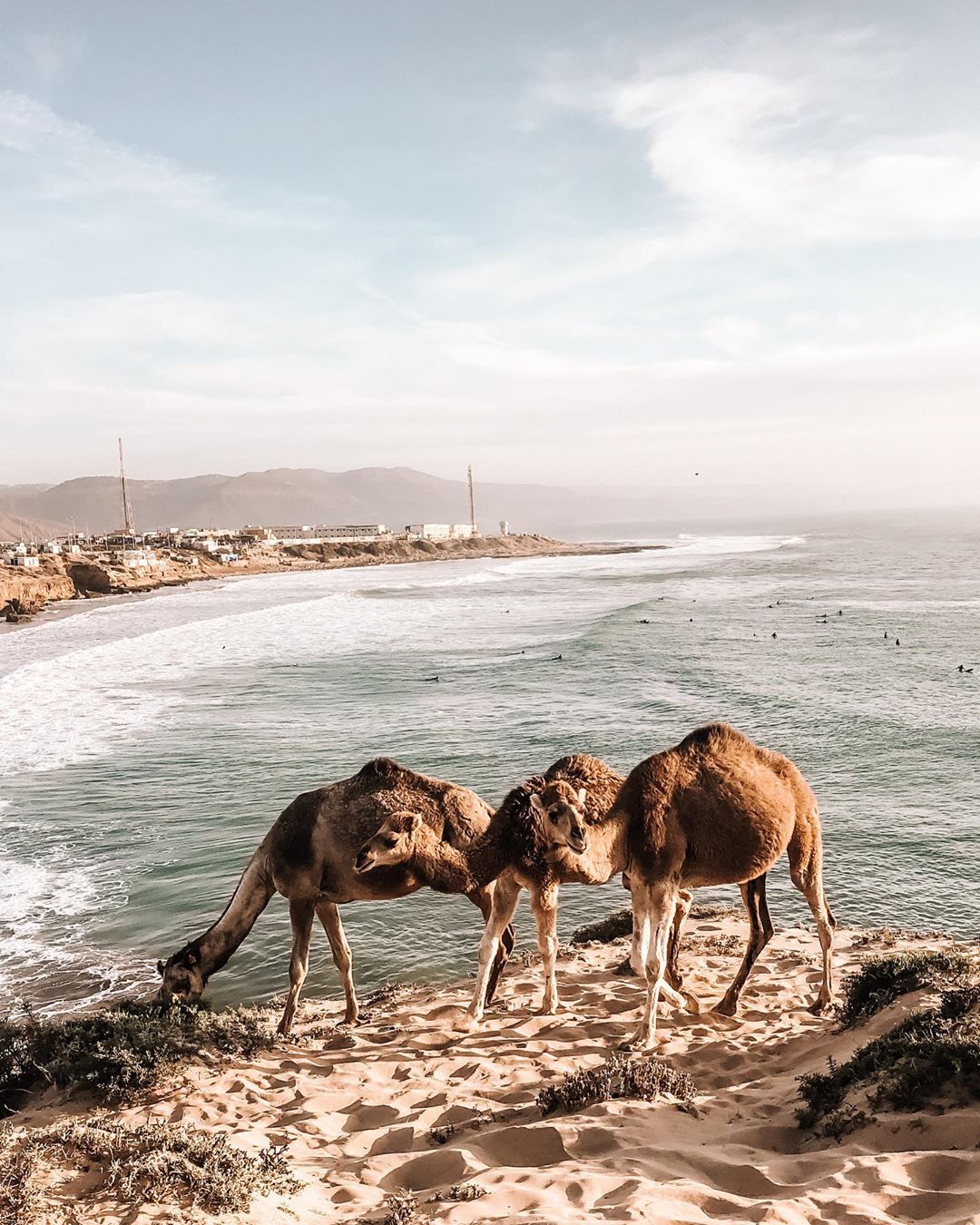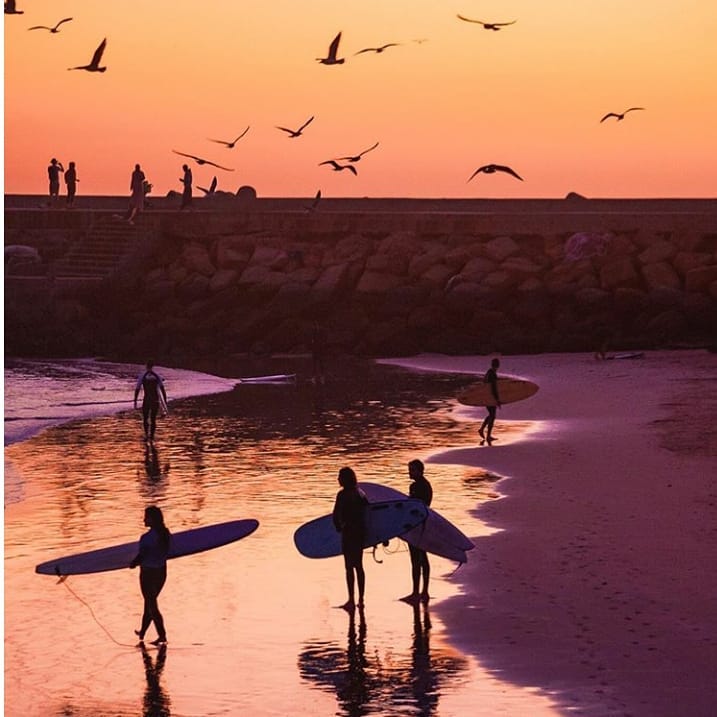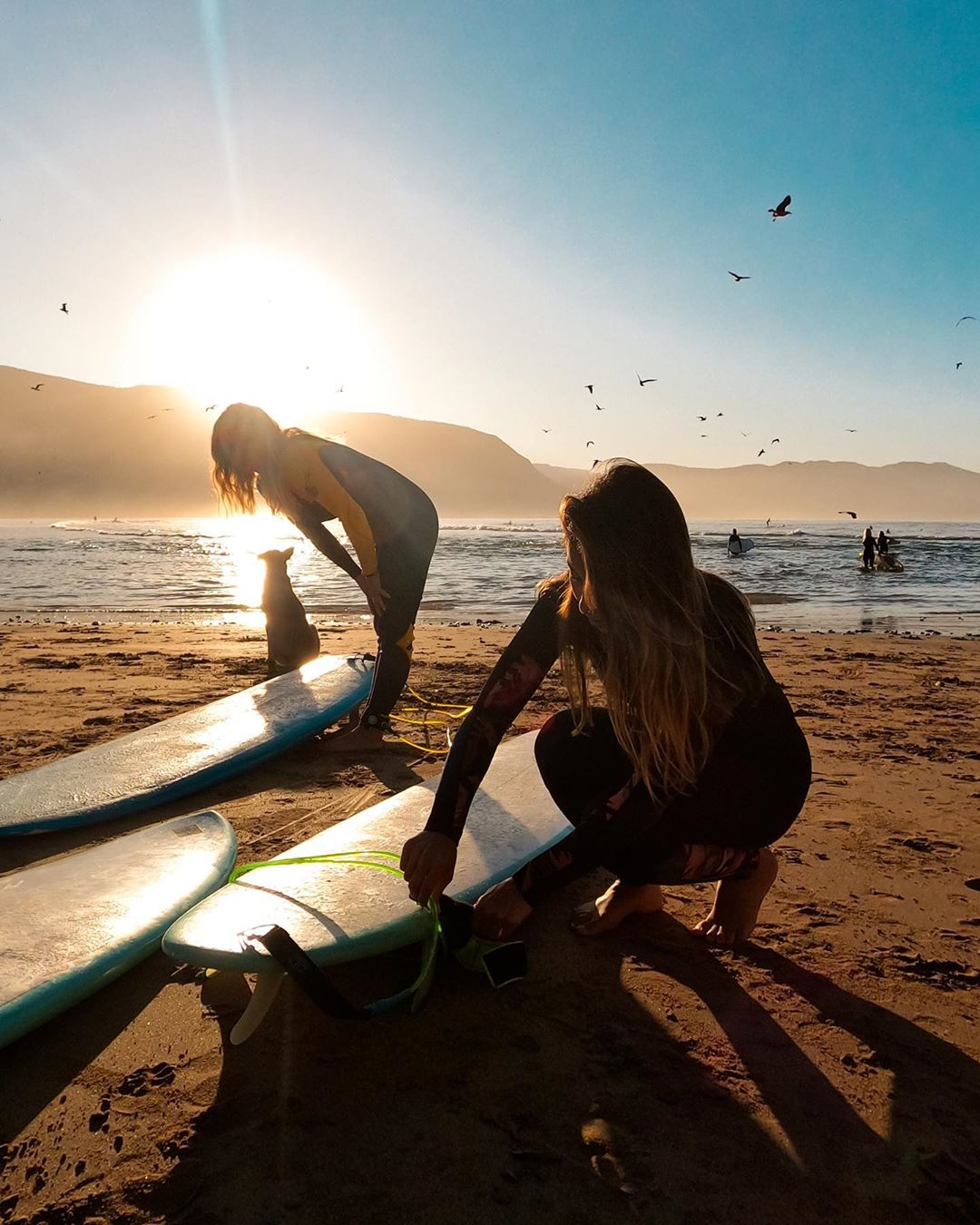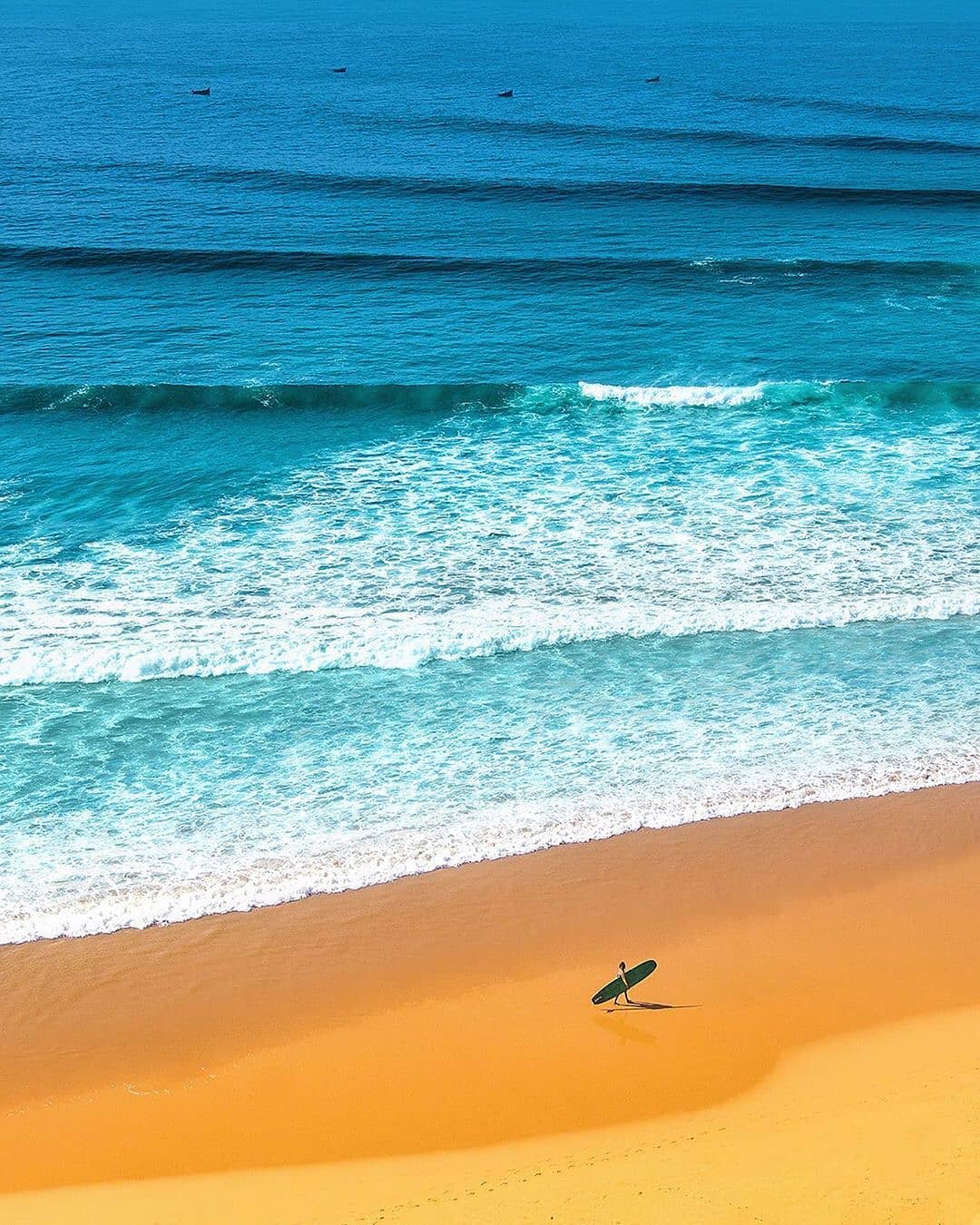We drove up from the south along a cliff-top stretch of Moroccan coastline. The scenery rolled along, wild and windswept, peppered only by grazing camels, who seemed to make no note of their ocean views. There was little to marvel at—save for some especially dexterous tree-climbing goats— until, without warning, the cliffs dropped off into the sea and we were left awestruck by our first look at the Magic Bay.
Morocco has long been on our travel radar; however, one small village on the south west coast has managed to keep itself a secret. Until now. Thanks to surfers, yogis, and gypsy travelers, the word had begun to spread about Imsouane. Following the buzz, two surfer buddies and I were off in search of impossibly long right handers, hot mint tea, and the traditional Moroccan hospitality that we heard The Bay promised.

We arrived early in the tiny fishing village, which grows out of a gracefully sloping cliffside. Whitewashed houses with blue doors mix peacefully with sand-colored buildings, while an unorthodox coral-pink lighthouse wreathed by fishing boats anchors it all down.
Fishermen and surfers alike all worship the same crescent-shaped bay. Moroccan seamen have been fishing the bay’s waters for centuries, and still pull their boats up onto the shore here to sell their catch, while beachside grills are fired up to cook the freshest fare.
For the surfers, the draw is a 600 meter long right hand peeler that the locals claim is long enough to smoke a spliff on. Known as The Bay, this wave is south facing and well protected, so it rarely gets messy or big. There’s also a faster, more exposed right hander framed by fishing cottages, called La Cathedral, that goes off from mid to high tide – great for those who want to avoid the crowds that The Bay draws.

At low tide, when it’s working, The Bay can get quite crowded, as we would soon find out. But as one of the longest waves in Africa, and only a short flight from cold, continental Europe, it’s well worth the trouble.
We had showed early enough in the morning to watch the fishermen pulling their boats up onto shore and unloading what seemed like boatloads of fish to clean and sell.
Fishing is the town’s primary economic activity, as well as its raison d’être. Centuries ago, when a nearby Islamic school needed to feed its young scholars, the Imam decided to supply local men with fishing equipment, under the stipulation that each boat would give a share of its catch to the school. He chose the bay as their harbour and, thus, Imsouane was founded.

These days, the Bay seems a far cry from its Muslim heritage. Bikini-clad tourists stick out amongst the mountainous backdrop, yet they seem to be accepted by the village locals. There’s few religious undertones — it’s more of a California surf scene circa 1970 kinda vibe here.
Imsouane, which lies equidistant between the more popular Essaouira and Agadir, managed to fly under the radar for years, until hang-tens on fat peelers began to creep their way into instagram feeds. Quickly, the surf bohemian crowd, that spends springs in Sayulita and summers road tripping the Portuguese coastline, began arriving. By 2017 Forbes had named Imsouane one of their top 27 most beautiful beaches in the world.
Yet even with all the fuss, there’s still a pleasant feel to the bay. Everyone is friendly, and thanks to terrible-to-non-existent wifi, you’ll actually get to know them. There’s no cell phone culture here, so people spend more time chatting over mint tea than checking Facebook. That in itself feels like some sort of magic.

Over our hundredth cup of tea that day, we learn from Youssaf, one of the local surfers, that the name Imsouane is a composition of two words in the Berber language: Imi, meaning “the mouth,” which Youssaf tells us represents the port; and isouane, which means “wet by the water of the sea.”
Also over tea, we learn that most Berbers call themselves Amazinhs, which means “free people” or “noble men” depending on your translation. The Berber culture bleeds into everything here, and we have it to thank for the delicious Tagine, unending pots of tea, and the incredible welcome we receive around every corner.
The bay isn’t all surf, camels, and tea however. The international crowd who’ve begun to put down roots have made sure that there’s a dose of culture and a remote paradise. You’ll find open yoga classes at most surf houses — our favorite is run by Leia at Olo Surf Nature — and even a single bar, Auberge Tasra, where you can grab a post-surf beer and listen to some live music.

Our other favorite activity, surprisingly enough, ends up being do-gooding. Olo Surf Nature runs a weekly beach cleanup, led by Adrien Decae, which draws a small crowd. The cleanup ends with the feeling that we’ve not only made a difference, but also made a host of new friends in the process. It seems like everything in the Bay really is connected by magic.
Looking around though, I have an uneasy feeling that Imsouane’s idyllic vibe might not last. Like any town, its own popularity could change it. Building sites were everywhere, and according to a Telegraph article, Moroccan surf-travel powerhouse, Surf Maroc, has plans to open up a surf camp in the Bay.
Yet as we drive back up to the lookout point to watch the sunset over the Atlantic ocean, I want to treasure Imsouane for what it is right now. With any luck, the magic will never run out.